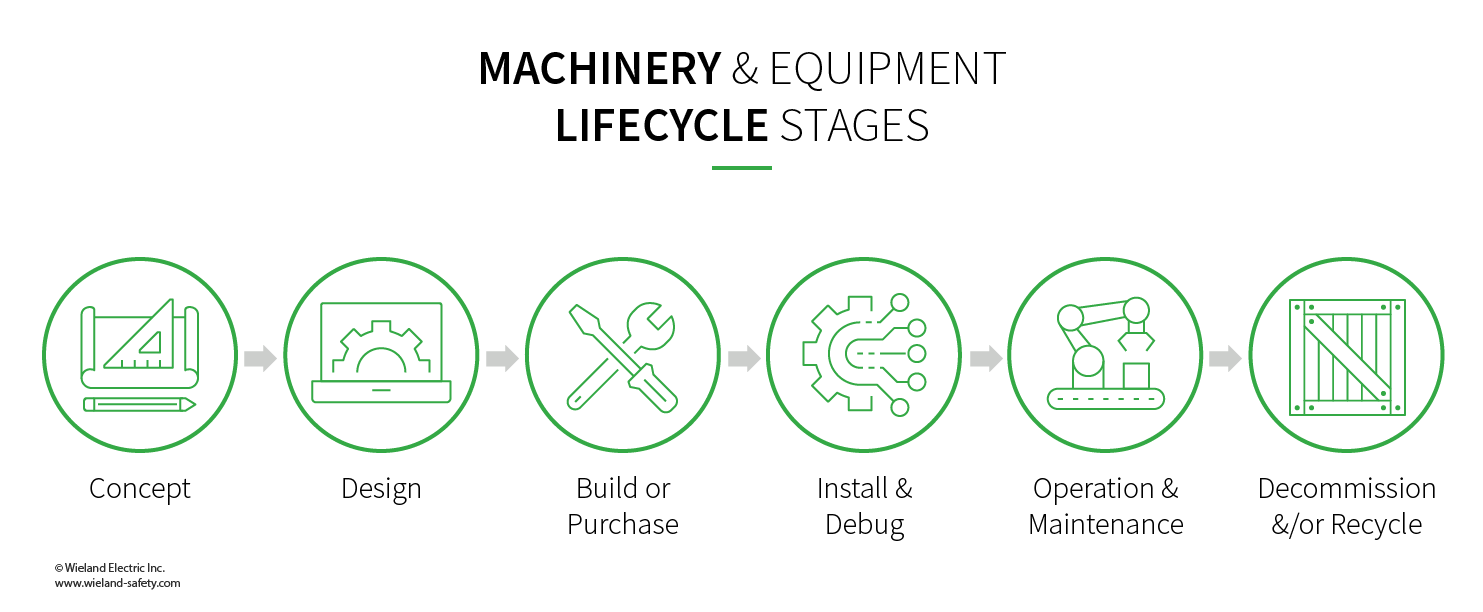A decrease in productivity is one of the worst myths when implementing safety solutions for industrial machinery. Then, why do we still hear about it? The reason is very simple, companies implement risk mitigation techniques without following the right process. Most companies implement risk mitigation techniques based on their engineering best practice or experience. This is part of the process, but not the whole picture. We need to follow what is known as the Machine Safety Lifecycle.
The key players in the Machine Safety Lifecycle are safety regulations and safety standards for industrial machinery. Therefore, following up-to-date standards, combined with an appropriate design and the state-of-the-art technology available nowadays, provide all of the necessary tools to ensure an adequate balance between safety and productivity. In most cases, safety solutions increase productivity and machine availability.
Risk Mitigation According to the Machine Safety Lifecycle
The Machine Safety Lifecycle starts with an appropriate machine safety concept, followed by an adequate risk assessment and definition of the proper functional safety requirements. This leads to a suitable design which must then be verified. Then come the installation and validation of the machine functional safety solution. This, in turn, ensures that the requirements of the risk assessment are met. Finally, to ensure compliance, a definition for the maintenance of the machine as well as the management of changes (MOC) is needed. This would cover any changes made to the machine functional safety system.
To summarize, the stages are:
- Concept and risk assessment
- Design
- Installation & Validation
- Definition of maintenance & management of changes (MOC)
Although each country or region has its own standards and regulations for machine safety, these standards and regulations tend to have global consistency. Machine manufacturers and manufacturers of safety function devices are looking to provide equipment that can be used worldwide by companies with a global presence without having to make significant modifications to comply with the standards and regulations from a specific country. This is why international standards, mainly from organizations such as ISO and IEC, are important. In addition, regional organizations such as OSHA, ANSI, NFPA should be taken into consideration.
A complete machine safety solution comes from aligning the Machine Safety Lifecycle with the Machinery & Equipment Lifecycle. A detailed explanation of the alignment at each stage is described in the next article.


Recent Comments